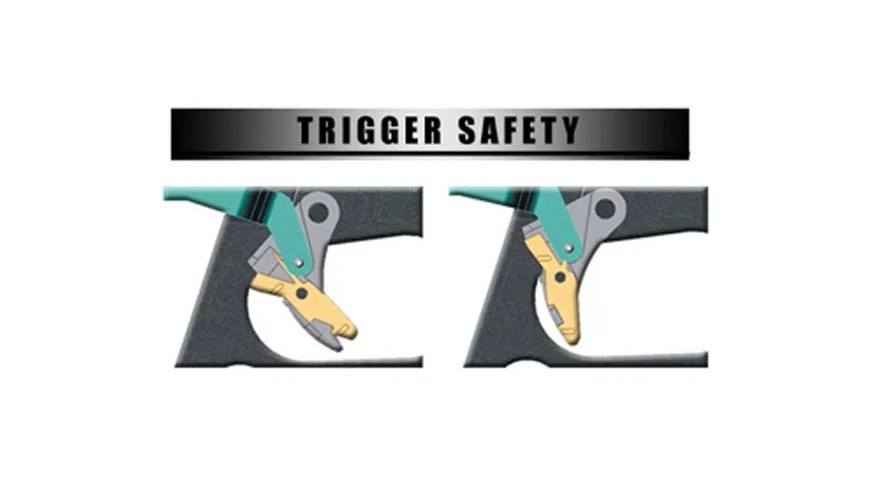There are three types of gun safety: physical, mechanical, and trigger.
The trigger safety is a type of mechanical safety that is usually integrated into the trigger of a firearm. For the gun to fire, the trigger must be fully depressed; otherwise, the firing pin will not make contact with the ammunition. This type of safety prevents accidental discharge if the gun is dropped or if something falls on the trigger.
Trigger safeties are found on many different types of firearms, including handguns, rifles, and shotguns. They are particularly common on handguns since they are small and easy to carry, which means there is an increased risk of them being dropped or coming into contact with other objects.
While trigger safeties are an important safety feature, they are not foolproof. It is still possible for a gun to discharge if the trigger is partially depressed or if the gun is tampered with. That is why it is important to always follow the basic rules of gun safety: always keep the gun pointed in a safe direction, keep your finger off the trigger until you are ready to shoot, and always be sure of your target and what is beyond it.
If you have any further questions about trigger safeties or other types of gun safety, please contact a certified firearms instructor.
You can take a look at the principle of operation using the Glock as an example:
A trigger safety is a mechanism built into some firearms that helps prevent accidental discharge. Trigger safeties can take many different forms, but they all serve the same purpose: to make it more difficult for the gun to be fired accidentally.
One type of trigger safety is grip safety. This is a mechanism that is located on the back of the gun grip. To fire the gun, you must first depress the grip safety, which allows the trigger to be pulled. This type of safety is common on semiautomatic pistols.
Another type of trigger safety is manual safety. This is a switch that you must disengage to fire the gun. Manual safeties are often located on the side of the gun near the trigger. Many people choose to carry their guns with manual safety engaged, as an extra measure of safety.
In general, trigger safeties are a good idea. They can help prevent accidental discharge, which could lead to serious injury or death. However, it is important to remember that no safety device is 100% effective. Always practice safe gun handling and storage habits to help reduce the risk of an accidental discharge.
Trigger safeties are devices that are used to help prevent the accidental firing of firearms.
There are many different kinds of trigger safeties, but they all serve the same purpose: to help make sure that a gun is only fired when the user intends to fire it. Some common examples of trigger safeties include thumb safety levers and magazine disconnects.
Thumb safety levers are perhaps the most common type of trigger safety found on pistols. These levers, which are usually located just behind the slide on the frame of the gun, must be deliberately disengaged for the gun to fire. This extra step helps to ensure that the gun will not accidentally be fired if it is dropped or otherwise handled roughly.
A trigger safety is a device that is used to prevent the accidental discharge of a firearm. It is usually located within the trigger guard and works by blocking the trigger from being engaged unless the shooter has their finger inside the trigger guard. Some trigger safety devices will also block the weapon from firing if it is not in a firing position, such as when the slide is not fully seated in the battery. Trigger safeties are an important safety feature on firearms, and can help to prevent accidental shootings. There are a variety of different types of trigger safeties, so be sure to consult your gun’s owner’s manual to see which type is best for your needs.
The purpose of trigger safety is to help prevent the accidental discharge of a firearm. Many firearms, especially handguns, have some form of trigger safety.


